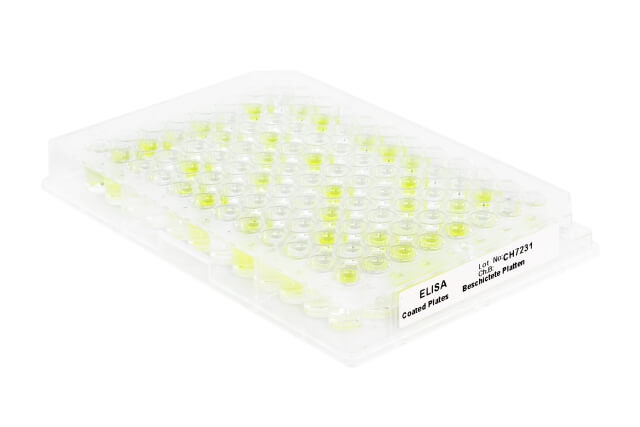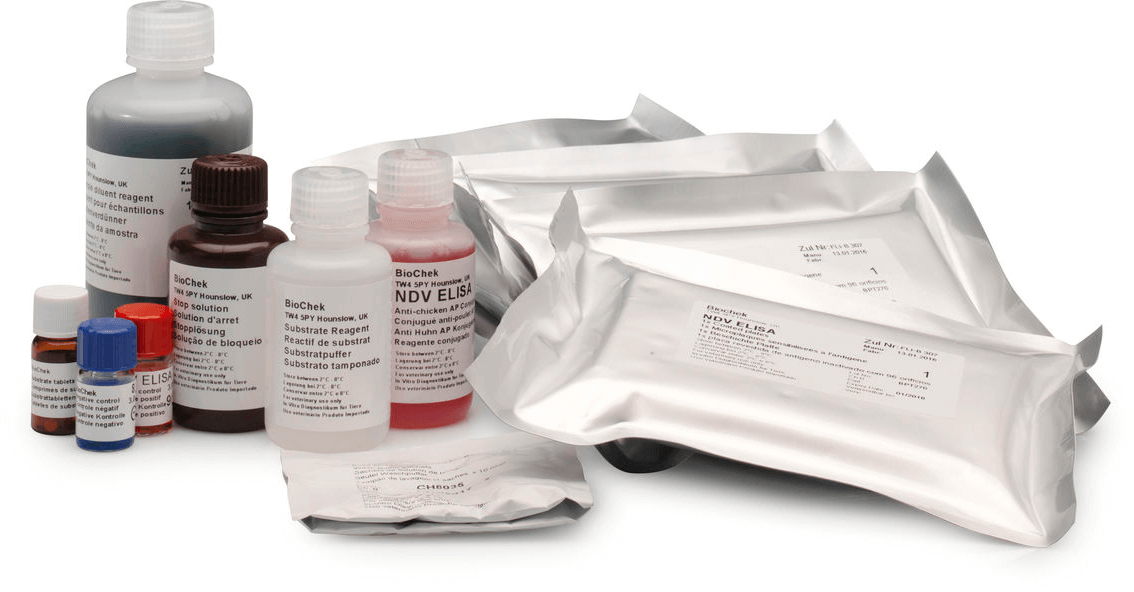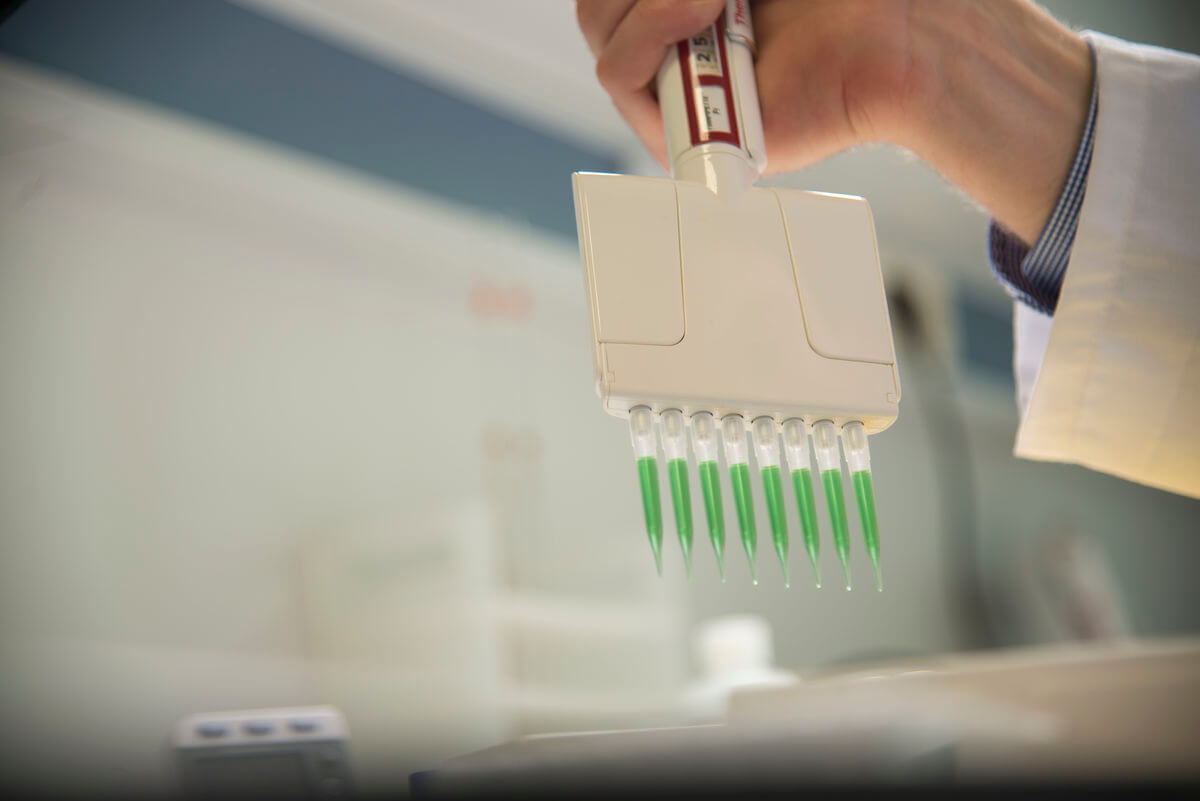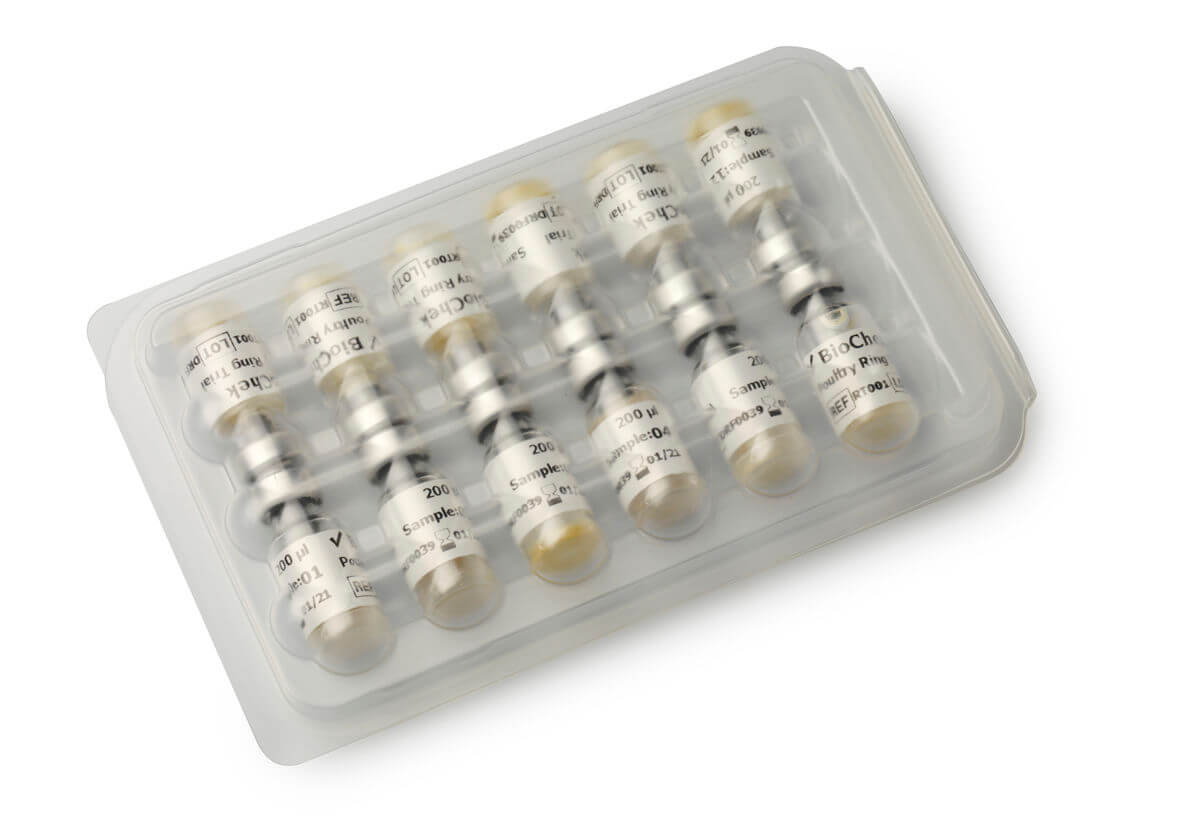1: Treatment of Conjugate Reagent
The shelf life of the BioChek ELISA kit is predominantly determined by the Conjugate Reagent. The shelf life of the Conjugate Reagent can be reduced when exposed to room temperature or higher for prolonged periods. To avoid shelf life reduction we recommend that you use the Conjugate Reagent as follows: When taking the kit out of the refrigerator, measure the required amount of Conjugate Reagent immediately with a 10 ml pipette. Then dispense the measured amount into a reagent reservoir (you will need 11 ml for a full plate and 6 ml for half a plate). Return the Conjugate Reagent bottle to the refrigerator. Allow the plate(s), controls, samples and all other kit reagents to reach ambient room temperature in the laboratory for at least 1 hour.
2: Problem: High Titres
Customers often contact us when suddenly finding high titres. The big question is if the results are real or have these been caused by a technical error? A possible reason is described below. We recommend using a 2 step dilution for making a 1:500 serum sample dilution. The first step is to add 5ul of serum to a dilution plate making sure you add all your samples that need diluting to this plate. If you have more than one plate of dilutions you may also pipette all samples into thewells making sure you identify positions carefully with a BioChek plate template. Then you add 245ul of green sample diluents to make initial dilution of 1:50.
The second step is adding 90ul of sample diluent (clear or green diluent dependant on kit type) to the test plate. Then add 10ul of diluted serum from dilution plate to the test plate providing the final required sample dilution of 1:500. It is of critical importance to add the 90ul of diluent to the test plate before you add the 10ul of diluted serum from dilution plate to the test plate.
A common mistake is adding the 10ul of diluted serum first and then 90ul sample diluent. The result of this action is that for a short period a sample with a 1:50 dilution will be reacting with the coated plate. Titers will be artificially elevated and the results will cause confusion.
An important aid in confirming that the dilution procedure was performed correctly is to use our freeze dried reference control RS01. The value of this control is published on the certificate of analysis in each kit.
Conclusion:
Be very strict in following test protocols, minor changes can cause big differences in the results.
3: Treatment of Partial Plates
Some customers need to run partial plates for 1 or more tests. The problem is that Microtitre plates coated with antigen are sensitive to exposure to moisture which could pose a problem when running partial plates. Therefore, all actions when running partial plates are directed at avoiding getting the unused wells moist. As it is impossible to completely avoid exposure to moisture, the shelf life of the plate will be impaired to some degree by running partial plates. We recommend using the entire plate within 2 – 6 weeks after having used the partial plate for the first time.
Another component which may affect the shelf life when running partial plates is the conjugate. This is because the conjugate will be equibrilated and exposed to room temperature more frequently than when using full plates. The solution is to measure the required amount of conjugate immediately when taking the kit out of the refrigerator. After measuring the correct amount of conjugate, return the container to the refrigerator in order to avoid all of the conjugate coming to room temp.
Positive and negative controls
The kit contains sufficient volume of positive and negative
control to enable a maximum of 15 runs.

Treatment of the coated microtitre plate:
- 1. Cover the wells not intended for use with plate sealer
- 2. Run assay and wash in such a manner that covered wells don’t get exposed to any reagent.
- 3. After finishing the assay, blot the used wells thoroughly, so no moisture remains in wells
- 4. Mark the used wells with water resistant marker pen
- 5. Uncover unused wells and COVER used wells with plate sealer
- 6. Put plate in aluminum pouch together with at least one pouch of (blue) desiccant. If the desiccant is pink, don’t use.
- 7. Seal pouch containing plate.
- 8. Write date on pouch.
BioChek now has a partial Plate kit set available containing all necessary instructions and materials (Plate sealers, Sealable storage pouches, desiccant pouches) for running and storing partial test plates. The correct use of the BC PP kit set prevents the decay of coated antigen plates extending the storage life of partially used test plates 2-6 weeks after first use.
4: Accuracy
BioChek implements ring trials to assess whether their customer laboratories are producing accurate results. Last year, 23 laboratories were sent samples of known antibody levels. However, they did not know the expected outcome. 17 of these laboratories achieved good results and the remaining six who did not were advised by BioChek on how to improve their accuracy. Needless to say, they produced good results upon said advice.
Each lab was sent a set of 12 freeze dried serums, eight of which were identical to assess repeatability.
Of those who did not achieve good results first time, the problem was identified by BioChek to improve their results.
One lab obtained high titers on all samples and BioChek suggested they revise their dilution method. Three of the labs were achieving a high CV, suggesting inconsistencies in their techniques. Lastly, three of the labs showed that some samples were accurate and others were not. BioChek suggested they retested their equipment, to ensure it was calibrated, or use new pipettes.
All the laboratories, upon achievement of good results, received certificates to verify their conformity.







